HOME | ABOUT US | MEDIA KIT | CONTACT US | INQUIRE
HOME | ABOUT US | MEDIA KIT | CONTACT US | INQUIRE
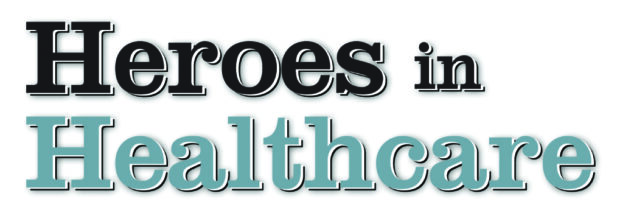
It helps to attach evidence of life-saving deeds to the use of the word “hero,” and without dispute, those engaged in the practice of health-care delivery are, in fact, saving lives every day. But those are the extreme cases. For the most part, one isn’t in need of life-saving attention when admitted to a hospital in this day and age. There is, however, another definition of hero that doesn’t require qualification: It’s a reference to someone engaged in simple acts of nobility. And that’s where you’ll find our Heroes in Healthcare every year—we spotlight them for doing something of noble quality. This applies to everyone in a care setting, from the top administrators to the nurses, from the professional staff delivering hands-on care to the auxiliary staff members creating the support infrastructure to make that care possible. It includes the volunteers, whose contributions of time and compassion leverage the strained resources of small hospitals and sprawling medical centers alike. And it includes our Lifetime Service honorees, a special category set up to recog-
nize those who have given their working careers over to the notion that there is, indeed, something noble about restoring health to those at risk of losing it. In this, our 14th installment of Heroes in Healthcare, we see again that the call to serve among
these select few has enhanced the quality of life for the 2.7 million souls who call this region home.
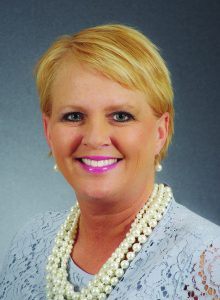 Becca Bell-McMahon Shawnee Mission Health
Becca Bell-McMahon Shawnee Mission Health
It seemed incongruous, even for someone who works in a cancer-care setting like Becca Bell-McMahon: Cancer, a patient told her, was the best thing that had ever happened to him. “He told me that had he not been diagnosed and given the opportunity to gain true perspective, that he would have missed so many things in life,” she remembers. “He was always busy working and his diagnosis forced him to slow down and appreciate what was right in front of him.” It was more
than just an uplifting moment; it became a touchstone memory in December 2015, when Bell herself was diagnosed with breast cancer. “I was now a patient as well as an oncology administrator,” says the director of oncology services for Shawnee Mission Health.
But a positive outlook has been part of her life since childhood, ably demonstrated by her father, a welder who advanced to a management position. In his office he still kept his lunchbox, with this inscription: Lest I Forget. “He told me that if you have an opportunity to positively impact more people, you need to do it,” Bell-McMahon says.
She moved into health-care administration after first working as a case-management claims examiner, then in finance for physician offices. As hospitals began to buy out private practices, she saw physicians struggling with the transition, and jumped at the opportunity to make a difference there. Before long, she was asked to restructure a cancer center—her first brush with oncology—then she became an oncology service leader before joining Shawnee Mission Health.
“I love working in oncology, because every day I see so many examples that keep me humbled and my life in perspective,” she says. “I hope that I have contributed to health care by being a servant leader. I believe that I am responsible for creating and providing an environment and program that allows our employees to serve our patients and positively impact their lives at a time when they are at their most vulnerable.”
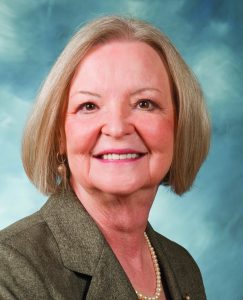 Lynda Donegan Truman Medical Centers
Lynda Donegan Truman Medical Centers
For a woman who has served as a chief nursing officer, a chief executive officer, and now vice president of professional health services for Truman Medical Centers, Lynda Donegan got off to a rough start with hospitals. She was five years old, growing up in St. Charles, when she was hospitalized with a case of rheumatic fever, but wanted no part of it. So she did what anyone confined against their will would do: She plotted her escape. Made it to the front lawn of the hospital, in fact, before a nurse caught her. But it wasn’t long before her views of health-care providers flipped. Inspired by an aunt who was a nurse at Kansas City’s General Hospital—the forerunner of Donegan’s current employer—she chose nursing at a time when she saw that field and teaching as the two best career options for a woman.
Before arriving at Truman, she rose from the ranks of nurse at hospitals in Hannibal, St. Louis, Kansas City and Springfield, eventually becoming president and CEO of Springfield Community Hospital. At Truman, she is responsible for the overall patient experience and how it is reflected in patient satisfaction surveys. Among an extensive and impressive list of her duties are administration and management of services in cardiology, hospital environment, food and nutrition, laboratories, language access, medical imaging, rehab services, respiratory therapy, trauma, diagnostics, the neurology clinic and oversight of the Center for Sleep Health.
Her move from nursing to administrative roles meshes with the satisfaction she takes in a job well-done, and while she misses the hands-on care, she’s related to the quality of that care every day. She makes the rounds actively, connecting with patients and finding out what they need. “It’s caring for people at their most vulnerable,” she says, “so I do whatever I can to make their
patient experience better.”
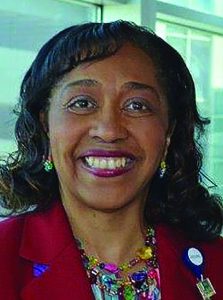 Patricia Sanders-Hall University of Kansas Health System
Patricia Sanders-Hall University of Kansas Health System
Her title is Vice President of Clinical Professions, which makes Patricia Sanders-Hall responsible for a range of therapy services—speech, occupational, respiratory and physical—radiology, biomedical services, pulmonary function and the clinical laboratories. But her real tradecraft is manufacturing: She takes the raw materials of a health-care professional’s call to serve, and turns that into finished products-—programs that serve more than 35,000 admitted patients each year and tens of thousands more outpatients at the region’s largest medical center.
Nurses and physicians are two of the core teams for inpatient treatment, but her work entails managing people with diverse educational backgrounds and competency requirements and varying regulatory standards. Effectively representing that professional diversity and building high-functioning teams, she says, “has truly been the greatest honor and privilege of my career. It required me to learn a lot (and continuously) about all of these areas”—more than 40 specialties in the clinical professions. It’s a big job, but anyone who knew her from her youth would have had little doubt that she’d master it.
An honor roll student every semester of her time at Central High School here, she was a National Merit Finalist who earned a four-year curator’s scholarship and graduated summa cum laude in speech and hearing sciences from UMKC, then earned her master’s in speech-language pathology and audiology at Denver University. “I was greatly influenced by the strong work ethic of my parents and grandparents and by their determination for all five children to go to college,” she says. “Growing up in Missouri in the 1950s-1970s, my siblings and I often were the first or only African-Americans in many situations, and we knew first-hand what it was like to break the color barriers in early integration of schools, colleges and careers.” But the messages from a strongly Christian-influenced home, to work hard and stay focused and perform at a high level proved foundational: “I have never wavered from believing this philosophy is a near-guarantee to a successful life.”
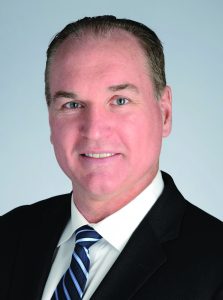 Robert Pluenneke University of Kansas Health System
Robert Pluenneke University of Kansas Health System
Conventional wisdom might hold that long-term relationships might be a rarity for physicians who specialize in treating patients with cancer. Robert Pluenneke is able to disagree with that, and not just because he’s working in a field that’s seen a great many advances during his two decades in practice—he’s known as being one of the best in his field, which helps explain why some of those patients are around. Early in his oncology practice, he remembers, he counseled a woman with malignant melanoma. “She had seen another physician and basically was told her disease was terminal, and that she should go home and get her affairs in order.” Young Pluenneke didn’t feel that was necessarily true, and was able to give her some specialized therapy. That was 18 years ago, and he’s still seeing the woman, who’s in her late 80s. It wasn’t just good medicine; it was good marketing. “She turned out to be my greatest advocate—I’ve had more referrals from her than any other source. That’s a wonderful thing.”
The Texas-born son of an Air Force officer became a Kansan when his father retired and settled in Wichita. After earning his undergraduate degree at Pittsburg State University, he headed to the University of Kansas Medical Center for a decade of medical school, residency, fellowship and a stretch of private practice as a partner at the KU Cancer Center. “Like everything in life, there’s symmetry,” he says, and when the hospital and cancer center merged in 2011, he was back with his former employer. There, he continues to build relationships, as with the young mother who came to him 15 years ago with a severely metastasized case of breast cancer that had spread to her bones, liver and lungs. Using a new drug, herceptin, he steered her toward remission, where she remains. “That certainly doesn’t happen in every patient, but it is an example of how in some patients these drugs can be miracle workers,” Pluenneke says. “She saw her children go off to college and continued to work full-time. She’s one of what I call my miracle patients.”
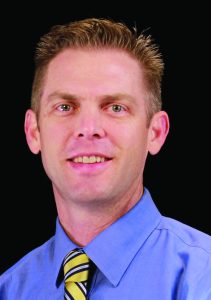 Joshua Cox Kansas City University
Joshua Cox Kansas City University
For Kansas City native Joshua Cox, “being a physician was a calling, and in spite of my efforts to ignore it, here I am,” he says. For those that believe in the concept of callings, Cox says, it can sometimes be difficult to identify exact details as to why one is led in a certain direction. But his is a direction that led to many paths, and his is a busy lifestyle: In addition to serving as chair of the department of family and community medicine at KCU, his list of medical duties at various time includes sports medicine coverage for Rockhurst University and the Missouri Comets, performing physicals for the Royals Academy in the Dominican Republic, and teaching a range of classes.
The first influence in his life with a medical connection was at home; his father, as well, was a doctor of osteopathic medicine. “He was, in my opinion, the textbook definition of an amazing patient-centered family physician,” Cox recalls. “The philosophy resonated with me.” When it came time to chart his own course in medicine, he couldn’t find one with more appeal than he’d seen first-hand as a youth. “The unique opportunities to teach and interact, along with the life-long learning concept in family medicine appealed to me.”While most of his cases aren’t nearly as exotic, Cox has seen some things on foreign medical missions that have reinforced his career choice. “On Kansas City University’s Global Health Outreach to Kenya, I had the opportunity to care for a patient with leprosy,” he says. “That interaction was certainly a “this is why I do what I do” moment.”
On a more routine level, his work as a professor at KCU means that “I have had the unique opportunity to make a small contribution to (and hopefully positive impact) in the overall medical education and training of thousands of medical students and resident physicians. As chief of the primary care division, I have also had the opportunity to play some small role in the career development of my colleagues.”
 Tim Steele Associated Audiologists
Tim Steele Associated Audiologists
When he was growing up on a farm outside of Waterville, Kan., Tim Steele had a great-grandmother with a profound hearing loss. “I was always fascinated with her hearing aid when
I was young,” Steele remembers. “I was also very interested in Helen Keller as a young person and did several biographies of her in elementary school. I knew I wanted to help people and I had interest in science and engineering in college.” After taking an introduction to audiology course at K-State, he said, “I knew audiology was my true vocation. Looking back now as an adult, I realize that my great-grandmother’s hearing loss was isolating for her and I only wish I could have been able to help her with all the options we have available today.”
What he’s seen over the course of his career borders on the miraculous. “We have hearing aid technology available now that I never dreamed I’d witness during my career,” he says. “With the advancements of digital signal processing, there are hearing aids that are more sophisticated than the technology that took us to the moon.”
It’s humbling, he says, to comprehend that some of our most sophisticated hearing aids can process 600 million calculations per second. Because of those advances, “more and more people are accepting the importance of communication and using ear-level worn devices as a part of their day,” he says. “This has helped dramatically improve the acceptance of hearing aids and decrease the old negative stereotypes of using hearing aid technology.” Despite those advances, he says, there is still a critical need for the professional audiologist. “I think many people either don’t understand or under-estimate how frus-
trating and isolating hearing loss can be. At it’s core, hearing loss can separate us from people. It’s been an honor and pleasure to be a part of helping others hear better and in many cases, my patients have
as much influence on me as I ever hope to have on them.”
 Chris Darrow Village Hospice
Chris Darrow Village Hospice
Sometimes, it’s the qualities you can’t teach that distinguish someone as a healthcare provider, and at Village Hospice, Chris Darrow’s supervisors say he reflects that every day with his work. For Darrow, though, success comes from being part of something bigger. “I enjoy the team approach of treating not only the patient, but the patient’s family,” says Darrow, an LPN. “Our hospice engages the patient and their loved ones with a combination of nurses, doctors, aides, social workers, chaplains, music therapists and volunteers, with every discipline’s efforts pointing to the single goal of providing comfort and quality of life to a patient at the end of life.”
Born and raised in Marion, Kan., he earned his nursing license at Penn Valley Community College, a track he took in part because of what he learned growing up. “I was greatly influenced in my young life and continue to learn from my Mom Debbi and Dad Bill —their examples of hard work and demonstrating empathy towards others have been invaluable to me. I wanted to work in a field where I was able to help others. Nursing—and hospice in particular—has allowed me to do so in a setting where I can be out in the community bringing nursing care to patients and families in their homes.
In six years with Village Hospice, he’s earned a reputation for having a unique compassion and calmness about him, supervisors say, as well as an ability to anticipate the needs of not only the patients but their family. And his sense of teamwork shines through often, they say, when he will step up to help cover patient visits for someone and sit with patients who require extra care.
“I feel rewarded every day in my job knowing that I can provide some comfort to a patient or a family member during one of the most intimate times in their lives,” Darrow says.
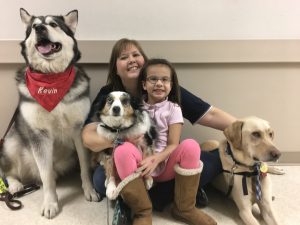 Susan Ruiz St. Joseph Medical Center
Susan Ruiz St. Joseph Medical Center
It’s the kind of moment that lingers in the mind of a hospital volunteer, and especially one like Susan Ruiz, who helped establish the Pets for Life program at St. Joseph Medical Center. In the waiting room of the ICU unit one day, a somber family was waiting for news of a loved one. That’s when Blake, a Golden Retriever that’s part of the program, managed to get his muzzle into a lady’s purse and pull out a ball of crochet yarn, looking around for somebody to play catch with him. Despite the tense setting, the room burst into collective laughter. “Everybody lights up when they visit with a pet, and their countenance completely changes,” Ruiz says. “Doctors and nurses say they have had patients open up about their medical history after a visit. The pets are truly the heroes.”
A 16-year volunteer at the hospital, Ruiz served a year as president of the hospital’s 1,000-member auxiliary in 2006, and learned first-hand the challenges of a recuperating patient when she had reconstructive hip surgery there. For six weeks, she spent eight hours a day strapped to a continuous motion machine, and the inspiration came to her for a pet-therapy project. Ten years after Pets for Life launched, “we have various groups of teams in the hospital about eight days a month, and altogether we visit approximately 1,000 patients per year and nearly 4,000 staff and visitors annually,” Ruiz says. “Each person visits with multiple pets, and we have had more than 180,000 people-pet interactions the past decade at St. Joseph Medical Center.”
Her own volunteer efforts haven’t always been solo events: “My daughter has gone with me to volunteer her entire life, since I was pregnant!,” Ruiz says. “Being a mom and volunteering together has been a tremendously special experience.” The family is able to blend its hospital work with home life, as the three kittens, Angel, Zechariah and Onyx, are the hospital program’s mascots.
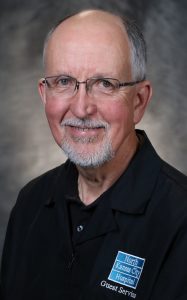 Len Knudtson North Kansas City Hospital
Len Knudtson North Kansas City Hospital
Sometimes, pure altruism inspires someone to service in healthcare. Sometimes, it’s something as simple as guidance from a loving spouse. “When I retired, my wife said I couldn’t hang around the house, I had to find something to do.” That led him first, to volunteering at nearby North Kansas City Hospital, just a few hours a week at first. And from there, encouraged to apply for the hospital’s Ambassador program, Knudtson found himself employed again. “I was lucky enough to get the job, getting paid for what I thought I was
volunteering to do,” says Knudston, who is perhaps best known around the halls of the medical center for his Bad Joke of the Day. In addition to helping steer people where they need to go, and infusing a few extra smiles around the building, he turns in volunteer hours in the human resources office, drawing on some of the skills he mastered in his career in the corporate world with General Electric and T-Mobile.
“What I like most about my job at the hospital is I can bring a little comfort to patients,” he says. “If they are hurting or sick, I hope that, for that moment in time, I can ease their pain and maybe get them to smile.” He chose the hospital not just because it was close to home, but because when he was looking for opportunities to make a difference, “I tried to put myself in a moment of feeling poorly and having anxiety. This is the only place I thought about.”
Doing what he does isn’t a benefit for patients alone; there is a greater value to volunteering and support staff work, he says. “How do you explain a good feeling, what it feels like to help someone?” he says. “They payback is greater when you’re helping someone, more than people realize. It’s a very good feeling to be able to do that. You don’t have to do a lot of big stuff, just look people in the eye and offer some help. It makes me feel good to help someone else here.”
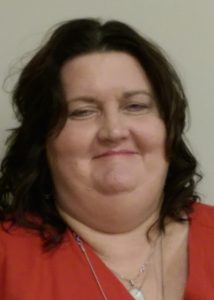 Leisa Eaks University of Kansas Health System
Leisa Eaks University of Kansas Health System
If you can say anything at all about Leisa Eaks, you can say she possesses a first-rate brand of commitment. When she was just 16 years old, she began working as a unit secretary in the emergency department at the region’s largest hospital, and 39 years later, she’s still in emergency medicine. Along the way, of course, she’s added serious nursing skill, picking up her associate’s degree from Kansas City Kansas Community College, and her bachelor’s from UMKC. Like her mother (a clinical nurse specialist in diabetes cases for more than 40 years), she’s made nursing her vocation. In the ER, she says, “there is always something different and an opportunity to learn so much.”
Part of the appeal, she says, is the opportunity to deal with patients and family members at all ages and at all stages of life—and, not infrequently, end of life. “It can be very humbling and demanding to give support to the dying patient and his/her family,” Eaks says. “This is the most unwanted outcome and it is a part of life.” But seeing the trauma patient recover is memorable and an amazing experience, she says.
“I never know who will come through the emergency department door, but I do know we have all been trained to meet the patient as
they’re present to us and provide anything from chronic dependencies to life-saving measures,” she says.
That niche exacts an emotional toll unlike any other facet of healthcare work. “It is a very emotionally draining situation to be in,” Eaks says. “Over the years, it still is emotional, but you know that you and your team have done all they could to resuscitate patients and you need to be there for the families,” and the hospital has responded with new support resources for the staff. “Nursing in the ED is life and death,” Eaks says, and sometimes more, as in one case where a patient with chest pains on his wedding day had the ceremony, impromptu as it was, right in the department. “It is the good and the bad,” Eaks says, “and most of all, it is nursing at its best.”
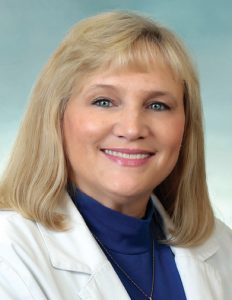 Chris Soetaert Olathe Health System
Chris Soetaert Olathe Health System
When you’re the oldest of five children, caregiving in some fashion is almost inevitably part of the bargain. Ten years separated Chris Soetaert from her youngest sister, who burned both feet, badly, at age 4. “I helped my mother each day to change the dressings and treat her burns,” Soetaert recalls. “That was probably when I knew for sure I wanted to be a nurse.” She became a candy-striper at Lawrence Memorial Hospital at 16, then worked at hospitals as a nursing assistant during school at Johnson County Community College and Washburn University. “I was fascinated watching the nurses take care of their patients,” Soetaert says. “Becoming a nurse was like ‘coming home;’ it felt right, and I can’t imagine doing anything else.”
Throughout her career at Olathe Medical Center, she’s held varied roles in the emergency room, gastro-intestinal lab, day surgery and other settings, acquiring skills her for her current role as a nurse in the admission transfer service department and managing community outreach efforts. It’s as much air-traffic control as nursing, as she is responsible for coordinating patient services with other healthcare providers—cardiology services, physical therapy, sleep study services, nutritional health, language interpreter services, nurse navigators for cancer care and more. “As a team, we look at how we can target the needs of our at risk communities and provide services that will best fit those needs at our health fairs,” Soetaert said. Many of those events are annual affairs, and it’s not unusual for patients to return a later, thanking her for the chance to learn they were diabetic, or had high blood pressure, and seek treatment. “It’s so fulfilling to get that kind of feedback and really see that the service we are providing in the community makes a difference,” she says.
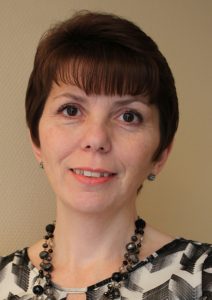
Marla Mosby Village Home Health
With five children and a pair of grandkids, Marla Mosby places a high premium on the importance of family. But in her case, family isn’t exclusive to blood lines. “Family means everything to me, and I consider the people I work with an extension of my family,” says Mosby. “I believe that I have found my home away from home here at Village Home Health,” where she is director of nursing. “I couldn’t imagine being anywhere else.” And how many of us can say that about our jobs?
Her path to that career started early, with a passion for helping those in need, she says. “”I knew that nursing is such a broad field and was hoping that I would be able to find my niche that would allow me to utilize my passion for science, but also make a difference in people’s lives.” And that she’s done, in a setting where relationships with patients are especially valued—long-term care. “Nurses working in home health have a lot of autonomy in the field,” Mosby says. “We rely on them to have integrity and need to trust that they are making good decisions at all times.”
In acute-care settings, by contrast, nurses generally have more direct oversight from management. In the latter stages of her own career, she’s part of a demographic trend that will alter her profession.
As Baby Boomers age out of the work force, “the volume of those receiving care will be significantly increasing,” she says. “We will see a shift of care from long-term and assisted living to the home setting, as the desire is to age in place.” Technology and changes in healthcare will enable Boomers to stay home with more resources to ensure safety and wellness, she expects, and they will have different expectations for care delivery setting, focusing more on quality and customer service.
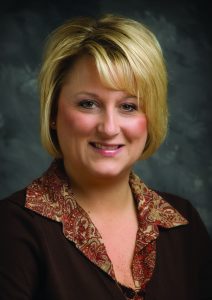 Amy Kincade Stormont Vail Health
Amy Kincade Stormont Vail Health
For Amy Kincade, there was never a doubt: “I have always wanted to be a nurse.” A number of relatives, says the Chanute, Kan., native, were in healthcare, including a grandfather who was a physician. But nursing held a special place in the family; her mother, stepmother and a pair of aunts. But also of a grandmother, who made a lasting impression. “She frequently offered what she believed were the most important things to remember about people, such as taking time to listen to someone, making a point to pay attention, make eye contact, and to call people by name.” Classic Nursing 101, delivered early.
“My grandmother would say, ‘Make meaningful connections,’ and then she would follow up by saying ‘good nurses do this all the time.’ On the advice of her stepmother, she jumped at a nursing job that opened at Stormont Vail while still in nursing school, and a career was born. She came up the nursing ranks and today is vice president for population health management, a move she made with some reservations. “I was somewhat skeptical because I was concerned I would no longer be able to provide direct patient care,” Kincade says. “I quickly learned that in a leadership role, you have the opportunity to shape many people who touch many more patients that I could ever do one on one.” But she is excited about addressing population health with changing care models. “It’s rewarding to collaborate with others, create networks and new partnerships that allow a focus on team-based interdisciplinary care to better support our patients and families,” she says.
“Helping patients stay well or helping them to better manage the health conditions they face should be our goal and I believe that the focus on population health is leading us there.” It may take years, but she’s hopeful that more patients will take greater responsibility for their health. “I hope the models that we create drive down some of the cost,” she says, “and shift cost to manage people’s needs better.”
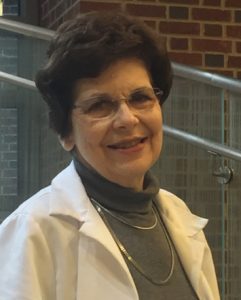 Alice Kasten Saint Luke’s Hospital
Alice Kasten Saint Luke’s Hospital
For some teachers, there’s nothing like that first year in the classroom to confirm your career choices. For Alice Kasten, the experience was a bit different. After finishing her education degree, she landed a job in Milwaukee “Even in private school, it was a bit difficult, and I decided I didn’t want to go home frustrated every day because of things going on in class.” She had worked as a nurse’s aid in high school and college at nursing homes, and even during that first year teaching, to supplement her income. So she followed her heart back to what she calls her second career.
The Johnson County native, came home, earned her degree at Saint Luke’s School of Nursing, and immediately signed on at Saint Luke’s, where today she’s a master in the specialty of wound-care nursing. That’s not just dealing with trauma cases and gunshot wounds. “I work with patients with new ostomies—surgical, pressure ulcers, that type of thing,” she says. It requires a deft touch, because openings in the body that don’t come as standard issue at birth can come with profound issues regarding a patient’s self-image. “It is a change in your body image,” Kasten says, “but you can lead a very active and successful life, we just have to get you off to the right start. A lot of it helping patients learn the skills they need.”
A stock line that helps make that connection: “I tell them, ‘you never need to like your ostomy, but you do need to learn how to take care of it and live with it, so you can get on with your life.’ Once you’re not afraid of it and you feel OK with it, that’s one of the big things. People always afraid that others would know they have it or think they didn’t want to be around them, and I try to dispel that myth. “I get a lot of satisfaction,” Kasten says, “knowing that even if they are not back to full health, we can help get them back to a condition where they can enjoy their life.”
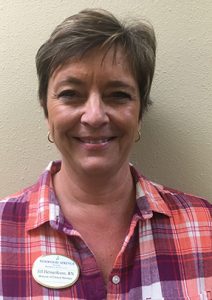 Jill Heinerikson Foxwood Springs
Jill Heinerikson Foxwood Springs
For Jill Heinerikson, nursing, and nursing management, aren’t just about healthcare: They’re also about family. She’s director of nursing for Foxwood Springs, the senior living complex, where she over-sees a nursing staff of 130 in a setting quite different from acute-care hospitals. “We’ve had residents here for years, so while it can be a hospital-type environment, it’s not only that, but their home,” she says.
“They would rather be home, but can’t, so that’s our job, to care for them. And they actually become our family as they go through different levels of care.” As a continuing-care retirement community, Foxwood Springs has residents in independent living settings, but as they age, the need for care may grow progressively with their moves to assisted living and long-term care. “So a lot of them are here for very long time,” she says, which creates opportunities to know a patient at a far deeper level than with short-term care venues. A native of Kansas City who has lived in Raymore since 1991, she earned her nursing license through the Kansas City school district, then her RN at Sanford Brown College. Long-term care, she says, has a special appeal.
“As our generations grow older, the need for nurses is there,” she says. “I really like visiting with the residents, hearing their histories and what they did for a living. It’s a relaxed type of care, providing a homelike setting for residents. They were huge contributors to our past and our present.” Nursing management has extended her reach across the campus, but she still tries to make time every day to get out on the floor in different units and perhaps interact with patients. She also comes in early, as the overnight shift is leaving, stays for the first shift, and checks in with the evening shift to complete the communication cycle. “They get to share things with residents that not everyone knows,” Heinerikson says, “and I can get social services or other support to dive into.”
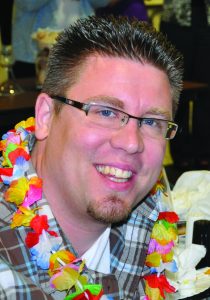
Jeromie Frost Mosaic Life Care
Can a song save a life? Jeromie Frost likes to think so. A longtime volunteer for St. Joseph Medical Center, now Mosaic Life Care, he’s also a musician who was once asked to write a song for the hospital. It would be featured on a TV ad promoting a 24- hour free mammogram marathon, Frost remembers, and it was successful enough to fill all available time slots. “I was told that as a result of the free mammograms, a couple of different women had breast cancer detected early and were able to get the proper treatment,” Frost says. “They both admitted that they would not have been checked if it weren’t for the commercial being so fun and appealing. It made me feel as if I had a small part in potentially saving someone’s life. Volunteering at the hospital is what brought me the meaningful opportunity to write the song in the first place.”
A St. Joseph native, Frost scratched the volunteerism itch early in life, working as a counselor at Camp Courage in Stewartsville Mo., a summer camp for disabled adults. There, he says, “I observed many wonderful people doing extraordinary work giving these challenged individuals an exciting summer to remember.” From that experience, he was able to reframe his own relationship with a little brother born with Down syndrome, gained more responsibility with the camp each summer, and created stronger bonds with the campers each year. That eventually led to his current career caring for the disabled, and one of those clients, whom he’s worked with for 19 years, has volunteered at Mosaic Life Care with Frost for more than a decade.
With volunteering, he says, “you are going to get out of it what you put into it. I feel the rewards come back to me even more after I have given an extra effort to do my job the best I can. Most of the effort is just showing up — the opportunities will present themselves if you are there.”

Betty Jo Marder Children’s Mercy Hospital
She can’t pull rank on Rand O’Donnell, the CEO at Children’s Mercy since 1993, but Betty Jo Marder did beat him on the scene by a good three years. And for nearly three decades as a volunteer, she’s been a fixture as the hospital around her has morphed under O’Donnell’s guidance. From the primary pediatric acute-care center serving this region, it is now a nationally known center for both treatment and research of pediatric illnesses.
Marder has done her part for the cause by logging more than 7,575 volunteer hours since her first shift in 1990. She currently serves in the hospital’s Ronald McDonald Family Room, where officials say she provides support to families as they enter the space for respite. She also helps guide groups that provide meals in this space.
She also serves in the hospital’s recovery room, assisting nurses by cleaning the surgery carts or providing patients with blankets or a drink as they are recovering from surgery. “Her dedication and compassion provide a sense of relief to families and staff on a routine basis,” said Nicki Johnson, director of volunteer and guest services. The family room, though, is her true source of joy. It serves families with a child admitted to the hospital, that often experience a great deal of stress and anxiety about their child’s medical condition or pending surgery. There, they encounter Marder, who has a reputation of greeting each with a warm, friendly, and comforting smile.
She takes the time to provide them with a tour of the space, helps families get settled with what they might need during their time of rest, and maintains the cleanliness and upkeep of the space. Outside the hospital, she supports other organizations, including the United Way (she’s among the Tocqueville, Members de la Société) helping the organization support mental-health programs, safety-net services and primary, therapeutic and specialty care for underserved children and families.
 Starr Wagstaff Saint Luke’s Hospital
Starr Wagstaff Saint Luke’s Hospital
“I can’t tell you just how,” says Starr Wagstaff, “but Saint Luke’s has always been a part of the tapestry of my life.” From the doctors visits there in her youth through her marriage to one of the hospital’s biggest supporters—longtime board member Tom Wagstaff—from roles with the hospital auxiliary (including past president) to management of fund-raising events like the Holly Ball, from shifts in the auxiliary’s gift shop to regular volunteer duties she currently has in the A-Level surgical waiting room, Starr Wagstaff isn’t just connect with Saint Luke’s, she’s absolutely a significant part of it.
These days, she logs about eight hours a week, by her count, in the waiting room, where she says the job is to be a liaison to make families comfortable in uncomfortable situations, and help meet their needs. “We help them understand the process of what’s happening when a family member is having surgery,” she says. “It’s always heart-warming to meet these families, when you leave you feel like you’ve been a help to the them, you feel good in turn.”
Her service also gives her a front-row seat to moments that are both uplifting and inspirational. “I remember in kidney transplants, there was one going on that day, and the family came in with the recipient. Quite often, a kidney comes from a donor who has had an accident, or from a family member or friend.”
That particular day, however, the donor was coming from someone who was in fine health and didn’t know the recipient. “It was just a person donating out of the kindness of their heart,” Wagstaff marvels. “It struck me that somebody would do that for someone they
don’t know. It restored your belief in the kindness that goes on between people, and was quite meaningful to me.” In that way, her service gives her more than she gives up. “I get the importance of empathy and kindness and caring and loving and all those things,” she says, “because I see it in all those families.”
 Marsha Morgan Truman Behavioral Health
Marsha Morgan Truman Behavioral Health
Behavioral health is a bit of a different animal in healthcare, for while it may not always have the kinds of life-and-death consequences, it surely entails life-altering interactions with patients. Over the course of her career in that field, Marsha Morgan came to understand how the compassion element could come into play. “One of my very favorite clients is a person who I met because he was very angry about the services that he was receiving. He is a pretty big guy and can be intimidating,” she remembers, but she managed to show him how his concerns could be channeled into improved care. Over time, his symptoms were reduced and he returned to a more normal life, and even helped with fund-raising for the organization. “Knowing that I could do something for someone who was so misunderstood and could have been seen as aggressive and consequently discharged when he most needed the services makes my day,” says Morgan.
Before her retirement last year, she served as chief operating officer for behavioral health, overseeing clinical services, staff competence, financial viability, customer satisfaction and client safety for hospital and community-based services, and was part of Truman’s leadership team. The St. Louis County native was drawn to healthcare as a Girl Scout, working with children who had disabilities. She graduated from MU with a degree in recreation and park administration, with a focus on therapeutic Recreation, and later earned a master’s in public administration from UMKC. While in college, she volunteered at the Rusk Rehab Center and worked part-time at Mid Missouri Mental Health Center.
“I found meaning in that work and reward in the relationships that I formed,” she said. “What brought me to behavioral health was/is my family. I have an aunt who has paranoid schizophrenia, and others who have chronic depression and bipolar disorder. I see people with mental illnesses as the most courageous people and people who are mostly misunderstood by the general public. Somehow, it seemed like I could fight for their care and treatment out of the love for my family.”
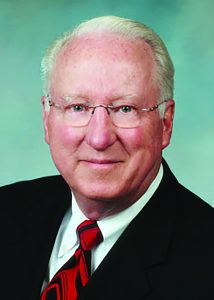 Keith Sheffer Olathe Health System
Keith Sheffer Olathe Health System
Keith Sheffer seems to have packed multiple lifetimes into his eight decades, including previous careers gigs as budding musician, high school teacher, university instructor, and a stint in the Army even before he came to Johnson County in 1974 and revolutionized—no, introduced—orthopedic care in Olathe. A man who has never been afraid to get his hands dirty, either washing pots and pans in the college cafeteria to pay for his medical school tuition, or restoring vintage autos today, Sheffer has been a trailblazer his entire life, going back to that KP duty in college: “I think there’s evidence I’ve always been a hard worker; I was able to graduate from college and medical school debt-free,” he says.
He’s a native of Richmond, Ind., whose varied background led him here more than 40 years ago as a pioneer of sorts; the 40-bed Olathe Community Hospital had no orthopedic program at that time. Told that he couldn’t secure malpractice insurance as a solo practitioner then, he started Johnson County Orthopedics, and paid a big price for it: $70,000 a year just for the custom insurance program he created with an insurer (nearly $350,000 in today’s dollars). His practice started in a small office with a curtain separating patient treatment from nursing and administrative functions.
Sheffer had to borrow operating equipment from a colleague at Shawnee Mission Hospital, which meant he couldn’t begin his own surgical regimen until after 5 p.m., and often labored in surgery until 1 a.m., then cleaned the tools and took them back to Merriam. It’s hard to imagine such a primitive setting, given the medical cornucopia of modern-day Johnson County. But the evolution has been worthwhile. When a patient can be freed from a wheelchair to walk unassisted, “you see the smile on their face, and it brings tears to your eyes,” Sheffer says. “That’s the reason you went into medicine.”
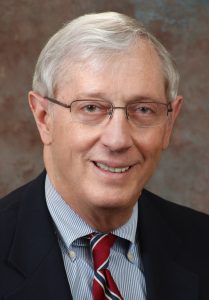 Mike Montgomery North Kansas City Hospital
Mike Montgomery North Kansas City Hospital
Even as a youngster, Mike Montgomery understood what it meant to be a general practitioner in a small town: He sometimes accompanied his father in the area around Sabetha, Kan., when Dad was making house calls. So when time came to chart his own path in medicine, Montgomery had to explain to his father why Sabetha wouldn’t be on the route. “When I was in training,” he remembers, “I got into internal medicine and got to do a lot of cardiology. My father really wanted me to come back and take over his practice, and I had to convince him that this was what I really wanted to do.”
And legions of cardiology patients in Kansas City’s Northland can be grateful that Montgomery made the choice he did. After a 14-year-stretch in the Air Force, he became a partner in the Northland Cardiology private practice, later selling it to North Kansas City Hospital, and has been a fixture in regional heart care for more than 35 years.
Cardiology has given him the opportunity to form long-lasting relationships with some of his patients, including one he’s been seeing for three decades. “He’s 92 now,” Montgomery says, and when we started, we fixed his coronary arteries, then replaced his aortic valve when he was 88. He’s still driving, still very active, and that’s kind of a nice thing to be able to take care of someone so long and see them doing well.” His involvement with the hospital didn’t stop with patient treatment; he’s a longtime member of the hospital’s board of trustees, and served as its chairman during a tumultuous 2013, when people in the community rallied to prevent the sale of the municipally owned facility. “We went through a rocky period, but it was very rewarding to me to see the support of the community and physicians and employees at this hospital, how they all came together and the concern they had and wanting to keep it,” he says. “It was such a joint effort.”